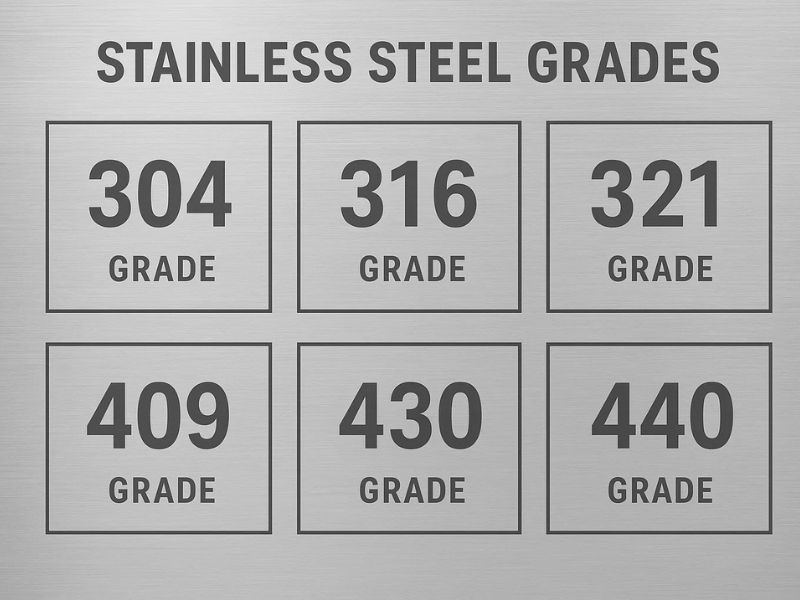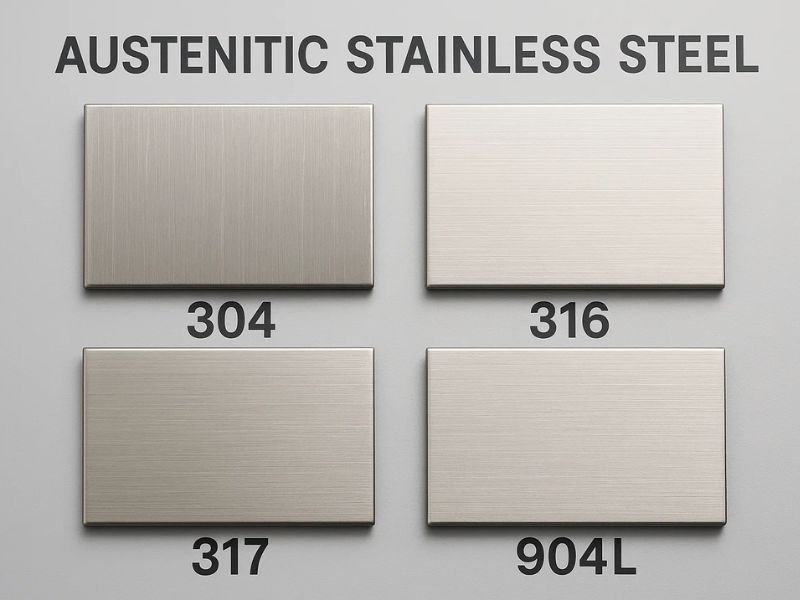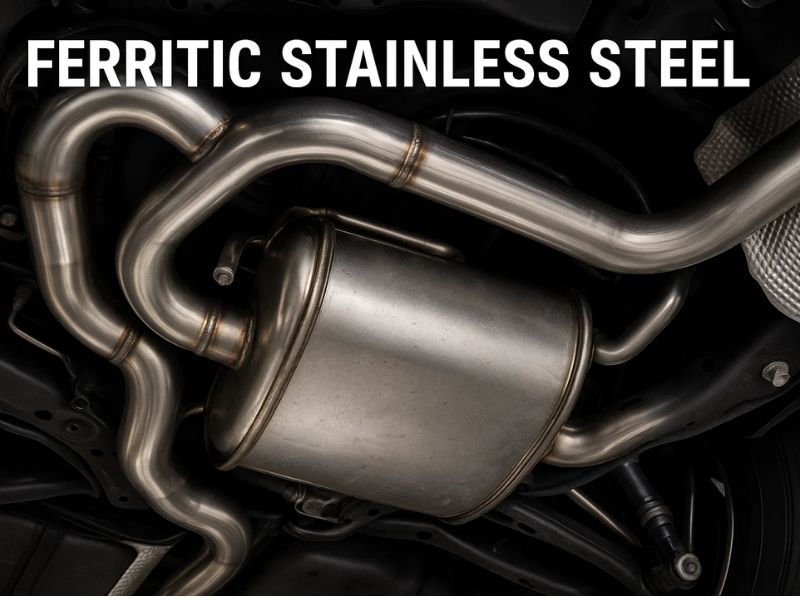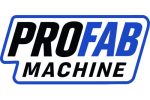- By Profab /
- August 13, 2025

Why Stainless Steel Does Not Rust? The key lies in its composition. Stainless steel contains at least 10.5% chromium. In air, chromium reacts with oxygen and quickly forms a dense, invisible chromium oxide film on the surface of the steel, called the “passive layer.” This passive layer can self-repair. It effectively isolates the steel from corrosive media, preventing rust.
This guide introduces the three main types of stainless steel based on their crystal structure and chemical composition: Austenitic Stainless Steel, Ferritic Stainless Steel, and Martensitic Stainless Steel. It is presented by the Profab expert team, which has 20 years of experience in precision stainless steel parts manufacturing. We provide a clear and practical selection framework to help you match material properties to application needs. This ensures your projects remain reliable and cost-effective.
Table of Contents
Austenitic Stainless Steel (304, 316, 317, 904L)
Austenitic stainless steel has a face-centered cubic (FCC) crystal structure. This gives it excellent ductility and toughness. These grades contain a high proportion of chromium (16–30%) and nickel (6–20%).

304 Stainless Steel – The All-Rounder
304 stainless steel is the most widely used grade. It is often called “18/8” or “18/10,” meaning it contains about 18% chromium and 8–10% nickel.
Corrosion resistance: Excellent in various atmospheric and chemical environments.
Formability and machinability: Easy to form, weld, and machine for different shapes.
Non-magnetic: Non-magnetic in annealed condition.
Limitations: In chloride environments (such as saltwater), the passive layer can be damaged, causing pitting and crevice corrosion, especially above 60°C.
Typical uses: Kitchenware, food processing equipment, screws, machinery parts, automotive exhausts, and architectural decoration.
316 Stainless Steel – The Upgraded Player
316 is similar to 304 but contains 2–3% molybdenum.
Superior corrosion resistance: Molybdenum greatly improves resistance to chlorides such as seawater, sea breeze, and de-icing salts.
High-temperature resistance: Slightly better strength and oxidation resistance than 304.
Non-magnetic: More stable non-magnetic properties than 304, even after cold work.
Limitations: Higher cost due to added molybdenum and nickel.
Typical uses: Marine equipment, chemical processing equipment, medical devices, pharmaceutical equipment, and equipment for high-salt or acidic foods.
316L – Preferred for Implants
316L is the low-carbon version of 316, with carbon below 0.035%. It prevents intergranular corrosion after welding and offers excellent biocompatibility. Ideal for medical implants, surgical implants, and body jewelry.
317 – High-Molybdenum Enhanced 316L
Contains about 19% chromium, 13% nickel, and up to 3.5% molybdenum. 317L is the low-carbon version. It offers high creep strength, rupture strength, and tensile strength at temperatures up to 950°C.
Typical uses: Petrochemical and chemical equipment, pulp and paper industry, food processing, and pharmaceutical equipment.
904L – The Peak of Super Austenitic Stainless Steel
Contains 19–21% chromium, 24–26% nickel, 4–5% molybdenum, and 1.2–2.0% copper. Extremely resistant to pitting, crevice, and intergranular corrosion.
Famous for use in luxury goods, especially a Swiss luxury watch brand that uses 904L for cases and bracelets since 2003. Other uses: Marine engineering, pollution control equipment, and heat exchangers in severe corrosion environments.
Ferritic Stainless Steel (430, 434, 409)
Ferritic stainless steel has a body-centered cubic (BCC) structure. It has low or no nickel content. Corrosion resistance comes mainly from chromium (10.5–27%).
430 – The Most Common General Ferritic Grade
Contains 16–18% chromium, low carbon, and is magnetic. Good corrosion resistance and formability. Comparable to 304 in low-corrosion environments but more economical.
Typical uses: Kitchenware, cutlery, dishwasher liners, appliances, and car trim.
434 – Molybdenum-Enhanced 430
Contains 16–18% chromium and 0.75–1.25% molybdenum. Better resistance to localized corrosion and certain chemicals. Heat resistant up to 816°C.
Uses: Water tanks, solar water heaters, automotive trim, wipers, and outdoor panels.
409 – Cost-Effective, Heat-Resistant Stainless Steel

Contains about 11% chromium and stabilizing elements like niobium or titanium for weldability. Lower corrosion resistance but excellent high-temperature resistance.
Main use: Automotive exhaust systems, catalytic converters, and mufflers. Balances heat resistance with low cost.
Martensitic Stainless Steel (410, 420)
Martensitic stainless steel has a body-centered tetragonal (BCT) structure and higher carbon content (up to 1.2%). It can be hardened by heat treatment.
Advantages: Very high hardness and wear resistance.
Limitations: Lowest corrosion resistance among the three types.
Uses: Knives, surgical instruments, and bearings.
410 – General-Purpose Martensitic Stainless Steel
Contains 11.5–13.5% chromium and ≤0.15% carbon. Good corrosion resistance, improved after quenching, tempering, and polishing.
Uses: Bolts, screws, bushings, nuts, shafts, pumps, valves, petroleum refining, and gas turbines.
420 – The Blade Steel
High-carbon martensitic stainless steel. Can be hardened to extreme levels for cutting tools.
Uses: Surgical blades, scissors, and pliers.
Core Differences between 300 and 400 Series
In practice, you will most often come across 300 and 400 series stainless steel. Their essential differences determine their respective application scenarios and costs.
| Comparison Dimension | 300 Series Stainless Steel | 400 Series Stainless Steel | Key Differentiation Insights |
| Chemical Composition | Mainly contains chromium and nickel, some grades contain molybdenum | Mainly contains chromium, with very low or no nickel | Nickel is a key element that determines the cost, and its price fluctuation directly affects the cost of the 300 series. |
| Microstructure | Austenitic | Ferritic/Martensitic | The microstructure determines the macro properties. Austenite has good ductility and martensite has high hardness. |
| Corrosion Resistance | Generally superior to the 400 series, especially in terms of resistance to oxidative corrosion | The overall corrosion resistance is relatively weak, but some grades can be enhanced by alloying. | The corrosion resistance of the 300 series comes from the high content of chromium and nickel. The 400 series relies solely on chromium to form a passive layer. |
| Hardness and Strength | Relatively low, but can be hardened by cold working | Due to its high carbon content, it can be heat treated to achieve extremely high hardness and strength. | The 400 series is more suitable for manufacturing tools and mechanical parts with strict requirements on hardness and wear resistance. |
| Magnetic | Non-magnetic or weakly magnetic | Magnetic | Magnetic differences are the simplest physical way to distinguish these two series. |
Stainless Steel Grades Chart - Quick Reference
For your quick reference, we have compiled a quick reference list of all the common stainless steel grades.
| Brand | Series | Key Chemical Components | Core Features | Typical Applications |
| 301 | Austenite | 17% Cr, 7% Ni | High strength, can be hardened by cold working | Automobile decorative strips, springs, clamps, conveyor belts |
| 304 | Austenite | 18-20% Cr, 8-10.5% Ni | Strongest versatility, good corrosion resistance and good formability | Kitchen appliances, food processing equipment, industrial parts |
| 316 | Austenite | 16-18% Cr, 10-14% Ni, 2-3% Mo | Adding molybdenum element, excellent chloride corrosion resistance and high temperature resistance | Marine equipment, chemical processing, medical equipment, high-salt food processing |
| 317 | Austenite | 18-20% Cr, 11-15% Ni, 3-4% Mo | Contains higher chromium, nickel and molybdenum, and has better corrosion and pitting resistance than 316 | Textile, papermaking, and chemical equipment |
| 409 | Ferrite | 10.5-11.75% Cr, <0.5% Ni, 0.48-0.75% Ti | Contains chromium and titanium, resistant to high temperature gas corrosion, low cost | Automobile exhaust systems, catalytic converters, mufflers |
| 420 | Martensite | High carbon content, 12% Cr | Can be heat treated to obtain high hardness and wear resistance, but weak corrosion resistance | Surgical knives, scissors, valves, bearings |
| 430 | Ferrite | 17% Cr, no Ni | Common ferritic steel, magnetic, corrosion resistance close to 304 | Decorative parts, automotive accessories, kitchen equipment |
| 434 | Ferrite | 17% Cr, Mo added | Improved version of 430 with added molybdenum for enhanced pitting resistance | Car interiors, kitchen equipment |
| 904L | Super Austenite | 19-23% Cr, 23-28% Ni, 4-5% Mo, 1-2% Cu | High content of nickel, molybdenum and copper, corrosion resistance far exceeds 316L and 317L | Luxury watches (Rolex), chemical acid treatment, offshore oil and gas equipment |
Choosing stainless steel requires balancing performance, environment, and cost. Profab offers both knowledge and manufacturing capability, with 20 years of experience, 5-axis CNC machining, milling, turning, welding, and surface finishing. We deliver custom solutions based on your drawings or samples.
FAQ
Is 304 stainless steel food-grade?
Yes. It is non-toxic, corrosion-resistant, and easy to clean.
What is food-grade stainless steel?
It meets strict hygiene standards, resists corrosion, and is safe for food contact. Common grades are 304 and 316.
What is the best food-grade stainless steel?
Depends on the application. 316 performs better in salty or acidic environments. For most uses, 304 is sufficient and more economical.
What is marine grade stainless steel?
An informal term for materials resistant to chloride corrosion in seawater. 316 is the standard benchmark.
What are the three main types of stainless steel?
Austenitic, Ferritic, and Martensitic. Common grades are 304, 316, and 430.
Send Inquiry Now
Related Resource
